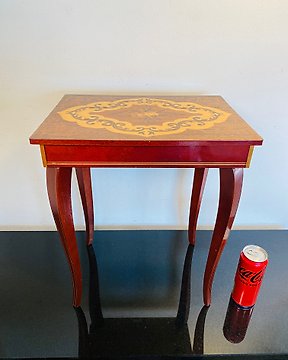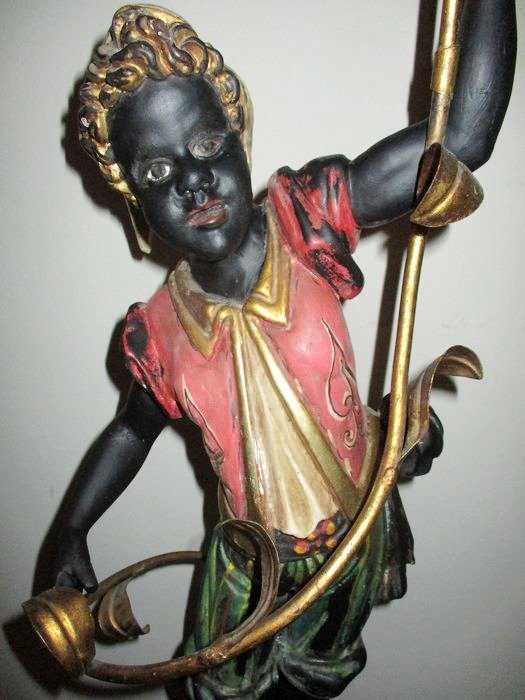
Reuge - Muziektafeltje - Table d'appoint - Bois
Nº 36836249

Nº 36836249

Venetian Blackamoor candelabra sculpture handmade by skilled craftsman in Venice in the 1940s/50s.In excellent condition, considering its age.The Venetian Blackamoor is made of hand painted wood and the 5-light candelabra is made of iron. It’s a valuable artistic sculpture.
A bit of history of Venetian Blackamoor:
There are many stories about the “Moretto”, the Venetian Blackamoor, a typical theme in the Venetian jewellery and goldsmithing tradition. The Blackamoor character has its origin in the commercial relations that the Venetians had with the Middle Eastern people. The contacts between Venice and the Muslim countries are already evidenced by the legend of the St. Mark body snatching from Alexandria of Egypt in 828 AD. The name of Venice seems of Arab origin (it probably come from "al-bunduqiyya -> banadiqa"), and the very first written document that speaks of the Adriatic as the Gulf of Venice was written in Arabic by the geographer Ibn Hawqal. From the 15th century on, the trade relations between Venice and the Islamic countries became more intense, interspersed with occasional clashes. Egyptian, Persian, Tunisian, Tatar and later Mamluk, Ottoman or generally speaking "Turk" ambassadors and merchants resided permanently in Venice for centuries, even during the period of clashes, mainly in isolated buildings or neighbourhoods (as “Fondaco dei Turchi” on the Grand Canal, in the San Giacomo dall’Orio quarter).
There are many historical evidences of the presence of blackamoor slaves in the Venetian noble houses. It was considered very classy to have dark-skinned service people, as can also be seen in the "Miracle of the Cross" painted by Carpaccio in 1498, where a dark-skinned private house gondolier is almost in the foreground. You can see similar portraits of sailors and servants in the paintings by Tiepolo, Tintoretto, Longhi, Titian, Mantegna. The most famous Venetian Blackamoors are the Shakespeare’s Othello and the “Mori”, i.e. the bronze statues that beat the hours at the top of the clock of St. Mark's Square. The Blackamoors were therefore familiar characters in the old Venetian times, and a typical decorative theme, very much used by the artisans, the carpenters, the cabinetmakers, and the goldsmiths, who created the “Moretto” and made it a precious element in brooches, pendants or earrings.
Given its high value, this lot will be shipped inside a wooden crate with protective materials; therefore the shipping cost will be slightly higher than normal.
The lot is electrified; the electrical system has been tested and is in working order. All the bulbs are included in this lot.
Comment acheter sur Catawiki ?
1. Découvrez des objets d’exception
2. Faites la meilleure offre
3. Effectuez un paiement sécurisé